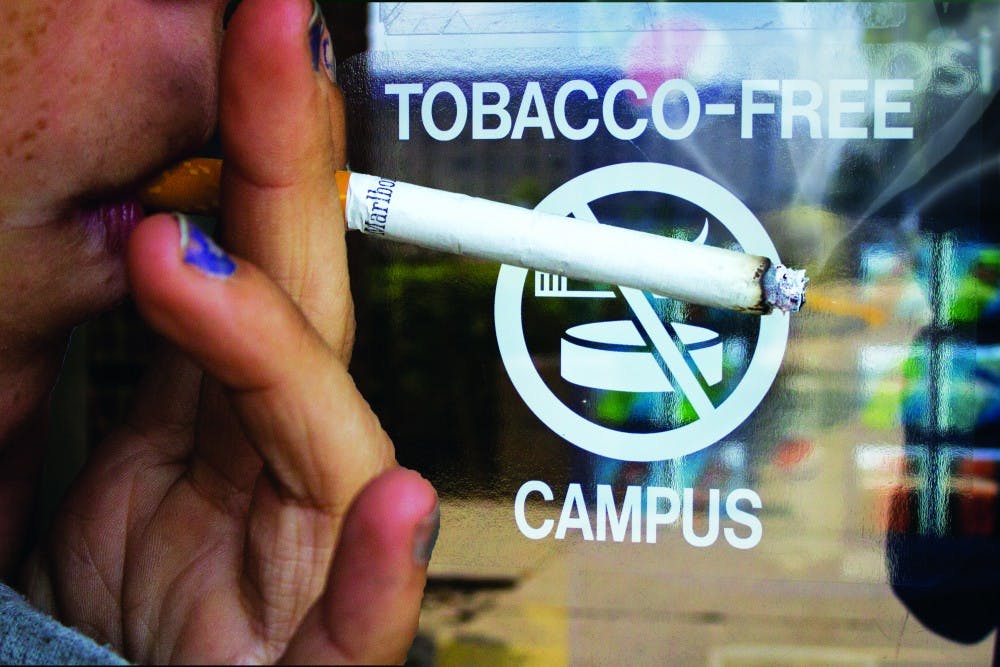EDITORIAL: Seeing through the smoke screen

CMU’s new tobacco-free policy, put into effect on July 1, has largely dispersed the crowds of smokers who used to congregate outside of academic buildings. So far, the policy seems to have been implemented smoothly, with minimal dissent from staff and students.
The nasty repercussions of both smoking and second-hand smoke have long been known. As the leading cause of preventable death in the United States, smoking claims the lives of nearly half a million people each year, according to the CDC. About 2.5 million nonsmokers have died from exposure to secondhand smoke since 1964.
Much has been done to curb the alarming epidemic, and we applaud CMU for taking part in the struggle for better health. However, the cloudy language and confusing details of the new policy have sparked some debate.
The “tobacco”-free policy also includes E-cigarettes, which are a tobacco-less alternative to smoking often used to kick the real thing. A policy meant to preserve health surely should not prohibit tools meant to help people quit the addictive habit.
According to the policy, people can smoke only in the confines of a privately owned vehicle, and their “windows should remain closed.” So essentially, the policy that calls for better health also subjects those struggling to beat the addiction to severely more harmful conditions when re-inhaling cigarette smoke in their cars.
Smoking is an addiction. Nonsmokers do not understand the psychology of smoking. Demanding smokers to quit usually has a reverse effect. No tobacco-free policy, much less one that is vaguely worded and loosely enforced, will completely clear the air.
As part of the initiative, CMU has removed all ashtrays from campus. The move could have an unhealthy impact on the environment. Those who knowingly disregard the policy now have nowhere to dispose of their litter. Occasional whiffs of tobacco smoke might not be as unpleasant as sidewalks blanketed with cigarette butts.
Most smokers violated the old smoking policy, which prohibited smoking indoors and within 25 feet of buildings. Most buildings, however, had ashtrays situated right next to doorways, in effect prompting smokers to situate themselves well within the 25-foot buffer.
The designation of smoking areas that are secluded from buildings and main sidewalks, and are properly equipped with ashtrays, would help clear both the air and ground on campus.
It is important to realize that no policy will please everybody, but it is equally important to realize that CMU serves a diverse population of students who value their freedom of choice.
Although administrators may have enacted the policy with good intentions, personal choice dictates what people do to their bodies; not policy.



